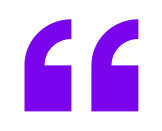A product strategy framework is a strategic plan that helps founders create, maintain, and grow their products. It includes all the necessary components to keep a product relevant and competitive in the market.
When founders clearly understand their product strategy framework, it will be easy to identify what is working and not working with their products. The frameworks are essential because they help companies understand their market and their customers’ needs.
With that said, let’s dive into this blog to explore the top frameworks of which every founder must be aware!
Goals of a Product Strategy Framework
Product strategy frameworks give a holistic roadmap for any product and help you stay on the right track during the entire product cycle. The framework can be as simple as a few key points or as complex as a full-blown document with all the details of what needs to be done to achieve success.
Product strategy frameworks should include a plan for how you will build, market, and sell your product. It should also outline how you will measure its success and where you want it to go in the future. The goal of a suitable framework is not just to have an idea but also to have an actionable plan that can be executed by everyone involved.
Many founders are not clear about the process of creating a product strategy. They don’t know what to include in their plan, how to prioritize it, or how to define the goals. But with a product strategy framework, they can easily find out what they should include in their plan and create a roadmap for their product.
The framework is also helpful because it has templates that can be used as it is or customized as needed. It also includes templates for competitive analysis and SWOT analysis, which are essential aspects of any business plan, but often overlooked by companies.
The framework helps founders focus on their strengths and weaknesses while keeping their goals in sight to succeed in the marketplace with their products.

Picture Credits – Unsplash
Categories of Product Strategy Frameworks
Product strategy frameworks can be separated into two categories. Founders can use them to help them make strategic decisions.
- Process-oriented frameworks: These frameworks focus on the process of product design and how to create a plan for it.
- Goal-oriented frameworks : These frameworks focus on the company’s goals and how to use product design to achieve those goals.
Two Types of Goal-oriented Framework
- Product-driven framework: Focuses on developing products that will best serve customers’ needs and wants.
- Market-driven framework: Focuses on developing products that will best serve customer needs and wants in a specific market.

Picture Credits – Unsplash
The 8 Most Common Types of Product Strategy Frameworks
Product strategy frameworks are a great way to help teams align their goals and strategies. They are also helpful for guiding the development process.
The eight most common product strategy frameworks are:
The Balanced Scorecard
This is useful for managing business performance, including financial and non-financial measures. It allows organizations to constantly develop the internal processes necessary to improve their mission-related activities.
The Product Development Cycle
This is a planning model with six stages that guides companies in product development. The six stages are problem recognition, idea generation, idea evaluation, deciding which idea to pursue, carrying out that idea, and product maintenance.
The Innovation Adoption Curve
This is a model that explains how consumers adopt new products over time. The adoption rate, or how fast a person adopts a product, is based on the product’s degree of innovation and willingness to try something different.
The Product Life Cycle
This helps companies understand the different phases of product development. The four phases of product development include introduction, growth, maturity, and decline.
The Product Matrix
This is a product management tool that can help companies understand their product offerings. The matrix considers a company’s products against three key dimensions: product-market fit, complexity, and revenue potential. Using the matrix, product managers can compare their products against others to see where they stand.
Value Proposition Design
This is the process of designing a product or service to deliver the value it was designed for. This process ensures that the founders provide what they promised and that their customers get what they want. There are three steps to designing a value proposition:
-
- Define your product or service features
- Identify the customer’s needs
- Design your product or service to meet those needs.
The Minimum Viable Product (MVP) Framework
This is used to quickly create a product prototype that can be tested and evaluated. It is focused on the product’s essential features, and it is released with the minimum functionality to test with users. This technique is used for both startups and enterprises. It helps founders avoid wasting time and money developing full-scale products that may not be successful in the market.
The Product Persona Framework
This is an archetypal representation of a user. A persona is not a real person but an amalgamation of characteristics of multiple people who may be the potential users of the product. It is used to test the usability of products with this particular group of users in mind.

Picture Credits – Unsplash
How to Choose The Right Product Strategy Framework for your Startup?
As we saw in the previous sections, there are many frameworks out there and choosing the right one for your company could be a daunting task. But the one that stands out the most for startups especially is the The Lean Startup Framework.
The Lean Startup is a framework created by Eric Ries, who in his book “The Lean Startup” says, “Build something quickly to learn what customers want. The lean startup methodology is based on how entrepreneurs create and launch new products or services without wasting time and money on features people may not want.”
To choose the right product strategy for your startup, you need to answer these six questions:
- What problem are you trying to solve?
- Who are your target customers?
- What do you want them to do with your solution?
- How much money can you invest in this project?
- What resources do you have available?
- What are your goals for this project?
Wrapping Up…
Product Strategy Frameworks are a great way to plan for your business’s future. The frameworks are also an excellent way for founders to ensure that they do not forget any crucial factors that may impact business success.
Product strategy frameworks are not just for large companies or startups with million-dollar budgets. Any company of any size in any industry can use them, and it doesn’t have to be complicated or expensive.
Tired of watching the competition get ahead of you? Then it’s time to deploy a framework that works for you. By brainstorming with us, you will gain insight into the most powerful frameworks for building a successful product. What are you waiting for?! Reach out to us now!








